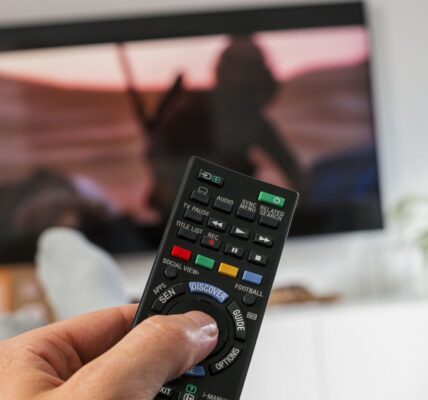OLED stands for organic light-emitting diode, while mini-LED refers to a mass of tiny LED (light-emitting diode) lights that can make up part of a display or backlighting system. Though both technologies create thinner, brighter and more efficient displays in Apple notebooks, Ming-Chi Kuo claims that OLED will be the superior option for thinness and more.
In this guide, we’ll compare the two technologies in detail so you can better understand their differences and determine which one is best for you. We’ll compare the benefits of OLED and mini-LED technology, discuss their design tradeoffs and look at how each type of display currently being used by Apple notebooks. We’ll also discuss Ming Chi Kuo’s recent claim about OLED superiority regarding thinness and what this could mean for future Apple notebooks.
By the end of this guide, you should better understand the differences between OLED and mini-LED displays so you can make an educated decision when it comes time to purchase your next Apple notebook.
OLED vs. mini-LED Technology
Ming Chi-Kuo, a renowned industry analyst, recently claimed that Apple notebooks with OLED displays will be far superior to those with mini-LED technology in terms of thinness, brightness, and battery life. This has raised the question of which display technology is better and why?
In this article, we will discuss the advantages and disadvantages of both OLED and mini-LED technology so that you can make an informed decision.
OLED vs. mini-LED Display Quality
The tradition of innovation of display technology continues, and Apple is planning to bring the next wave of display innovations to their notebooks thanks to Ming-Chi Kuo. The analyst claims that OLED vs. mini-LED displays will provide superior thinness, brightness, and power efficiency compared to traditional LCDs in Apple notebooks.
To evaluate the potential impact of these two display technologies on upcoming Apple devices, we first need to understand what each technology offers. OLED stands for Organic Light Emitting Diode and is similar in principle to LED backlighting used in LCDs. However, each pixel emits its light instead of relying on a backlight, which can create stunning deep blacks and contrasts along with high system power efficiency due to using only one RGB subpixel for each pixel. On the other hand, mini-LED is a variation of LCD backlighting that utilizes many tiny LEDs as the light source instead of one large one with multiple diodes dedicated to each pixel for improved brightness levels and minimal backlight bleed across image transitions.
Concerning Display Quality comparison between this two lovely technologies it all boils down to four main qualities: Brightness/Contrast Ratio (the darker the black color), Gamut (the more saturated color), Response Time (how fast images change) & Power Efficiency (less power consumption).
In terms of Brightness/Contrast Ratio, both technologies excel as they produce deeper black levels than current LCDs. Still, OLED displays have an advantage since each sub-pixel can turn off individually thus creating even darker blacks than mini-LED displays can achieve through dimming LEDs placed in local dimming zones. Meanwhile in terms of Gamut both technologies are almost equally capable as they offer similar coverage but once again OLED has slight advantages due to higher peak brightness level per sub-pixel which translates directly onto more saturated colors when viewing it at certain viewing angles or at higher ambient lighting conditions that block most incoming light coming off parts suchdisplays are equipped with LCN screens or low refresh rate remotes like wireless HDMI 2 receivers e know how spectacular these two techonologies could be when watching stuff like movies/playing video games etc.
In terms of Response Time both types perform equally well but withOLED offering the lowest input lag from them all thanks to individual sub pixel actively patching data from control boards via microsecond frequency then UHD 4K+ HDR content toof their respective diplay panels presenting butter smooth frame rates no matter how intensive game experience 1080P plus images could be . Finally Power Efficiency category offers another close battlebut miniLED again with its large scale array of ICs consumes much more energy when comparedso small scale substrate behind OLED panel’s photosensitive threshold voltage also known an organic cell draws only fraction amount electricity enabling portable devices like iPhones/AirPads last whole day even under highend chip performance loads working alongside 5G internet connection e likes us support so long battery life without requiring constant charging task every single day – up their packs lot this topic willas most vendors agree that should come tools consumer market sometime during 2021 year !
OLED vs. mini-LED Power Efficiency
Regarding power efficiency, OLED and mini-LED technology compete on different levels. OLED displays are more energy efficient for smaller devices because of their low voltage demands and flexible size. On the other hand, mini-LEDs are more efficient for larger displays because their higher voltage nature allows them to consume less energy at this scale. OLED displays require a lot of power to display images if the pixels need to be constantly refreshed on larger screens.
If you choose an OLEDs display on your laptop or monitor, you can expect increased battery life due to its improved power efficiency over mini-LED in smaller form factors. However, this comes at a cost as OLED panels are more expensive than equivalent LED displays and have lower life spans due to frequent pixel degradation.
Meanwhile, comparing mini-LED against conventional LED backlights reveals a similar story: while they’re slightly heavier than their equivalents (due to the need for additional light sources), they’re considerably brighter and requires much less power than regular LEDs — making them great options for those who needs an extra punch of brightness without compromising system performance or battery life on a device like MacBook Pro or Dell XPS 15. With that said, Apple has recently claimed that its upcoming notebooks featuring OLEDs will still outmatch mini-LEDs when it comes down thinness — as the much thinner profile of OLED panels means that there’s no need for additional space which would be needed when using LED backlights.
OLED vs. mini-LED for Thinness
Following an in-depth analysis of Apple’s upcoming OLED and mini-LED technology, Ming-Chi Kuo claims that the OLED components on some Apple Notebooks will give them an edge in thinness and potency versus mini-LED pieces. According to Kuo, due to its integral design, OLED components can achieve thinnest thickness and maintain a quality image without sacrificing performance.
While mini-LED does not work well for thinner displays as it requires a higher number of LEDs for lower resolutions, its primary advantage is focusing power usage on lights needed based on displayed content. This allows for greater control over the display’s gradient response, providing richer colors and better dynamic range than standard LCDs.
As both technologies are still in their infancy, it is expected that research continues into both methods to figure out how best to harness their strengths while minimizing their weaknesses. For now though it seems clear that while mini-LED provides great color accuracy and low power usage, OLED provides better thinness overall with no detriment to other aspects such as picture clarity or motion blur control. It seems likely that devices sporting these features will be built depending upon the device’s size with OLED being favored for thinner designs.
Ming-Chi Kuo’s Claims
Apple analyst Ming-Chi Kuo recently released a note claiming that the upcoming Apple Notebooks with OLED displays will be superior to mini-LED in terms of thinness and more. The news has sparked a discussion among tech enthusiasts about the advantages of OLED and mini-LED technology.
In this article, we’ll compare the two technologies and explain why Ming-Chi Kuo believes OLED is the superior choice for Apple’s upcoming notebooks.
Ming-Chi Kuo Claims that Apple Notebooks with OLED Displays will be Superior to mini-LED for thinness and more
Ming-Chi Kuo, a renowned Apple analyst, recently claimed that Apple notebooks with OLED displays would be superior to mini-LED for thinness and more. According to Kuo’s research note, MacBooks with OLED displays would be thinner than similar notebooks with mini-LED displays because OLED is thinner than mini-LED. Furthermore, Kuo states that OLED displays offer up to 20% better color accuracy than mini-LED due to its higher contrast ratio.
OLED technology has several strong points compared to traditional backlit LCDs regarding power efficiency and color range. However, the most impressive aspect of OLED is its ability to reproduce true blacks rather than the more washed out black of an LCD. This feature makes it ideal for larger picture quality devices such as televisions and gaming monitors. Furthermore, OLED panels require very little power to produce bright images; often in smaller laptops or phones, the battery life will be extended due to the efficient use of power while displaying still photos or video content at full screen brightness.
OLED has also proven to have excellent durability in comparison tests against other display types under the same conditions; this is beneficial when considering devices such as those used in harsh outdoor environments or simply for longer expected lifespan without degradation or discoloration throughout its lifetime of use.
Overall, Ming Chi Ko’s claims point towards an increased interest from Apple towards using OLED display technology over traditional LCD technology, given its several advantages compared to similarly sized panel sizes. While there are still practical applications where Mini-LED may prove advantageous depending on usage scenarios; Apple’s preference of using thinner panels will most likely ensure that MacBooks primarily feature OLED panels.
Ming-Chi Kuo’s Argument for OLED Displays
Ming-Chi Kuo, an Apple analyst and one of the most accurate analysts in the industry, made implications that in a near future Apple’s OLED displays notebooks will be superior to mini-LED. According to Kuo, OLED displays offer an array of advantages over mini-LED technology in terms of thickness which is ideal for slim notebooks.
Kuo also claims that Apple’s signature’s rich and vivid colors offer higher contrast ratios, providing enhanced brightness and reduced power consumption. In addition, the advantage of LCD technology over OLED is seen in its affordability and better battery life as OLEDs tend to be more expensive than traditional LCDs. However, LCD technology requires more components due to advanced backlighting requirements. Such characteristics can cause accessories such as keyboards, trackpads and ports very thin, thus making laptops bulky by comparison.
As suggested by Ming-Chi Kuo, using an OLED display with the same number of components as the predecessor may lead to thinner notebooks with powerful battery life which promises far better user experience for power users who travel often. An additional benefit that Kuo highlighted is that Apple has managed supply chains effectively to keep production costs low despite higher cost materials required for using advanced technologies such as Flash storage chip or silicon wafers used in production phase.
Suppose Ming-Chi Kuos’s claims turn out to be true. In that case, it’d potentially open doors to new opportunities where laptops featuring OLED displays will have a considerable market share compared traditional products available on shelves due to its improved combination of thinness and improved performance achieved via newly implemented technologies.
Conclusion
Based on analyst Ming-Chi Kuo’s claims, Apple may be poised to launch notebooks with OLED displays that offer superior thinness and performance compared to mini-LED. While mini-LED offers some advantages over OLED regarding color accuracy, contrast ratio and backlighting, OLED should provide a thinner, more energy efficient display for Apple devices.
The success of these notebooks will depend heavily on the quality of the components used and the success of Apple’s production line. Ultimately, it is difficult to determine which technology is better without seeing them side by side in a real world environment. However, all signs point to OLED being advantageous due to its high contrast rates and potential energy savings.
tags = Apple, Macbook, mini LED, iPad, air miniled q2 q3clovermacrumors, Device





